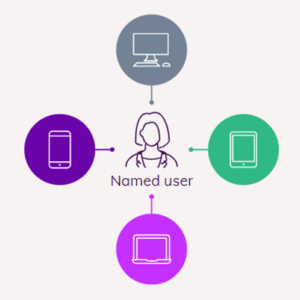What’s in a named user? The named user and operations control
Written by Emily Li, Senior Product Marketing Specialist, AVEVA
Just as the workforce needs to adapt to new technologies, industrial technology needs to evolve to serve the changing industrial workforce. With the rise of remote work, industrial workers now need to access software tools from anywhere. They need to easily access more comprehensive information and connect their teams with real-time data from multiple pieces of equipment from multiple plants in multiple locations.
This connected workforce needs a more user-centric approach to operations control. Historically, HMI/SCADA systems and software usage have been managed through licensing—quantifying data points, devices and users. Instead of relying on this old licensing model, user-centric software subscriptions incentivize teamwork and collaborative decision-making, maximizing operational awareness. By breaking down information layers and removing the burden of recreating data sets and insights, it gives industrial professionals clearer and faster results.
The key to achieving these new levels of connectivity is designating named users.

What is a named user?
Named users are not a particular username, group, organization, or any other non-person entity—they’re just people. Each individual who requires login access to the software counts as a separate named user. Each named user accesses software with a unique license, regardless of the number of devices they use.

Any named user can easily access information and personal repositories anywhere—on as many different devices as they like. Named users get sophisticated user credentials and use digital signatures for compliance when necessary, giving them added security and making the tedious task of manually storing passkeys obsolete. They’re able to easily adhere to whatever data security regulations their company requires. That advanced user authentication preserves the security that’s crucial to so many industries. Improved accountability and compliance keep the system up to date without administrators having to intervene.
When workers are named users who can use whichever device is most convenient, they are more likely to engage and connect in real time. When they share data and collaborate, they’re less likely to make errors. A connected workforce of named users can easily scale work processes and knowledge across diverse teams within your organization.
By taking a user-centric approach, the next generation of operations control software connects named users so that they can use your HMI/SCADA system to take a more holistic approach to operations control.